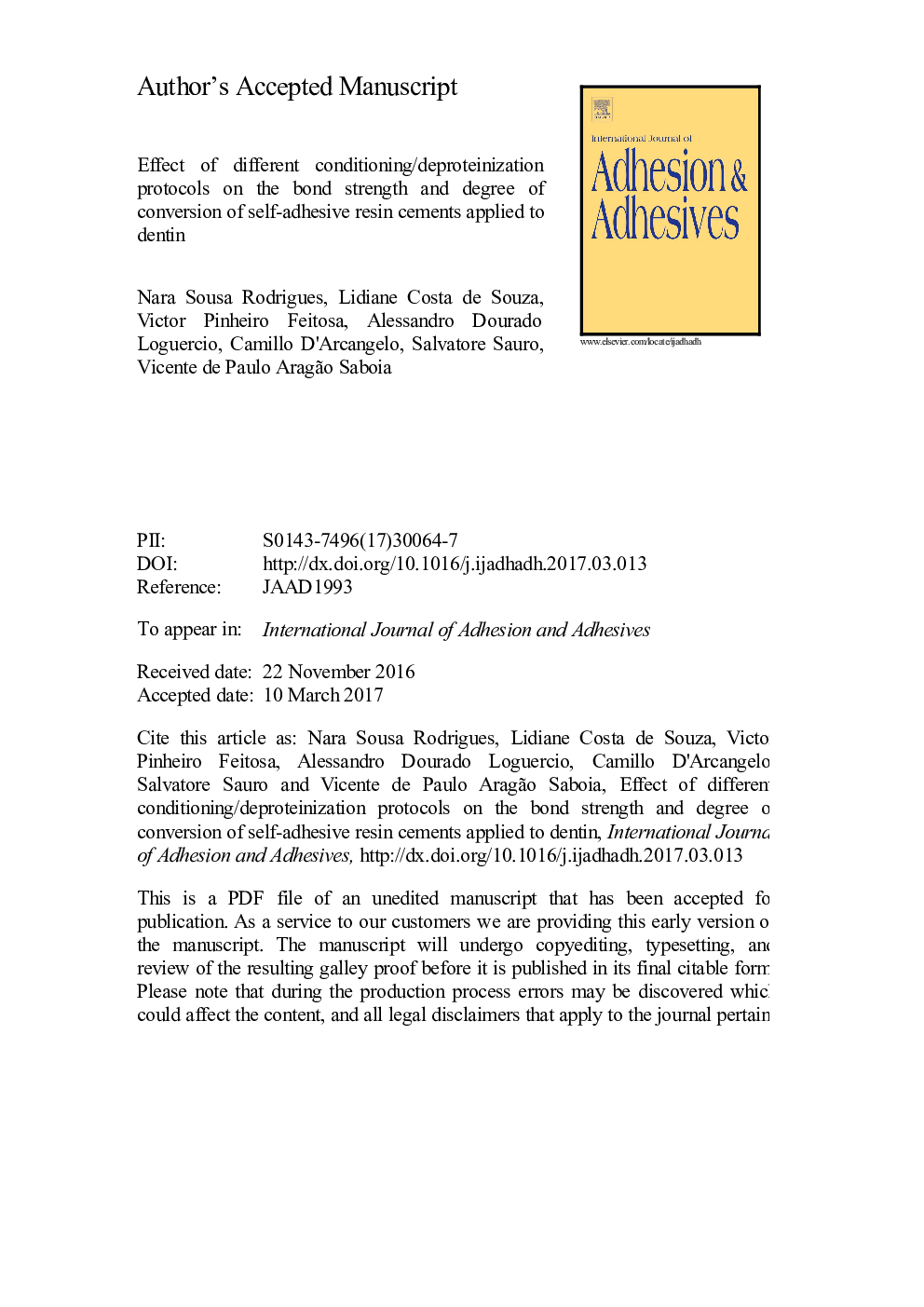| Article ID | Journal | Published Year | Pages | File Type |
|---|---|---|---|---|
| 7171010 | International Journal of Adhesion and Adhesives | 2018 | 26 Pages |
Abstract
This study examined the effects of two deproteinization protocols on dentin microtensile bond strength (µTBS), in situ degree of conversion (DC) and interfacial nanoleakage (NL) of two self-adhesive resin cements (SARCs) after 24 h or 200,000 load cycles. One hundred fourteen third molars were distributed into six groups according to the type of cement and the strategy of deproteinization. Resin cements used were RelyX U200 (RU) and Maxcem Elite (ME) following the manufacturer´s instructions and after deproteinization protocols (NaOCl for 2 min or acid etching before NaOCl for 2 min). The bonded specimens were randomly divided and submitted to microtensile test after 24 h or after 200,000 load cycles. Two slices from each subgroup were prepared for NL using ammoniacal silver nitrate solution, and analyzed through SEM. The in situ DC of three bonded-specimens from each group was measured through micro-Raman spectroscopy. Data was statistically analyzed by Two-way ANOVA and Tukey's test (p<0.05). Dentin deproteinization prior acid etching increased the µTBS of both cements at 24 h, but no differences in RU groups were found after load cycling. Dentin deproteinization decreased the DC and NL of both cements. After load cycling, this technique was effective for ME, but did not affect the bond strength of RU. Dentin conditioning/deproteinization enhances the integrity of SARC-dentin interface thereby improving the longevity of dentin bond after load cycling.
Related Topics
Physical Sciences and Engineering
Engineering
Mechanical Engineering
Authors
Nara Sousa Rodrigues, Lidiane Costa de Souza, Victor Pinheiro Feitosa, Alessandro Dourado Loguercio, Camillo D'Arcangelo, Salvatore Sauro, Vicente de Paulo Aragão Saboia,
